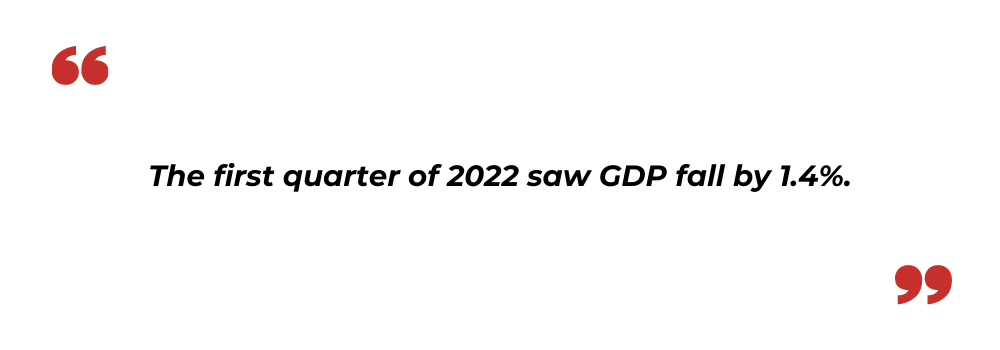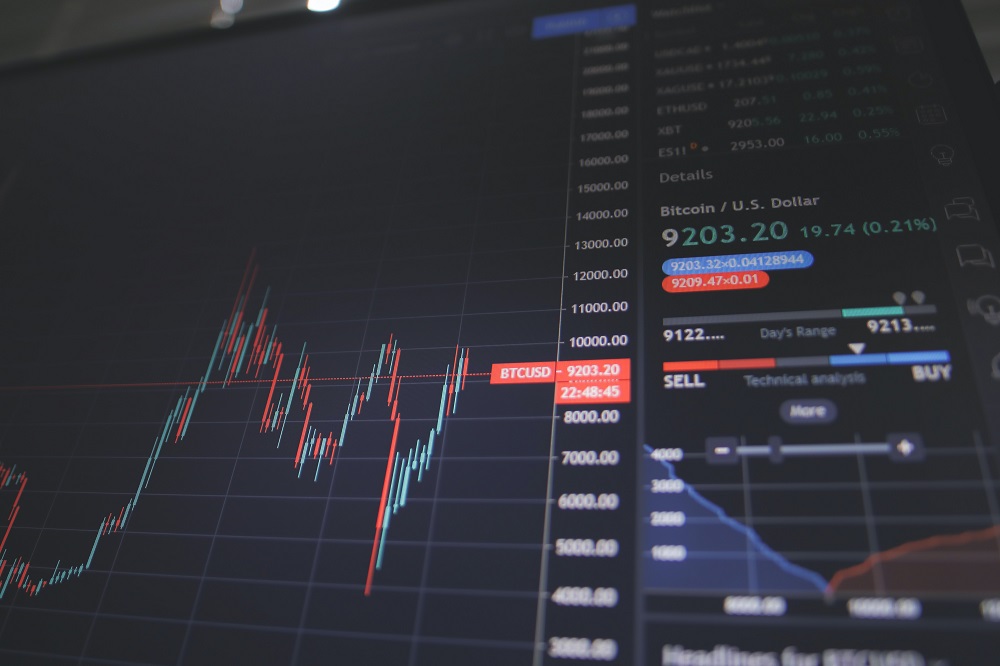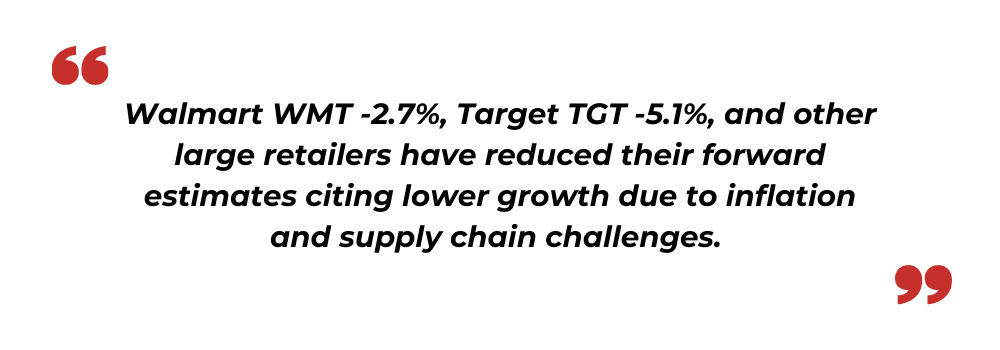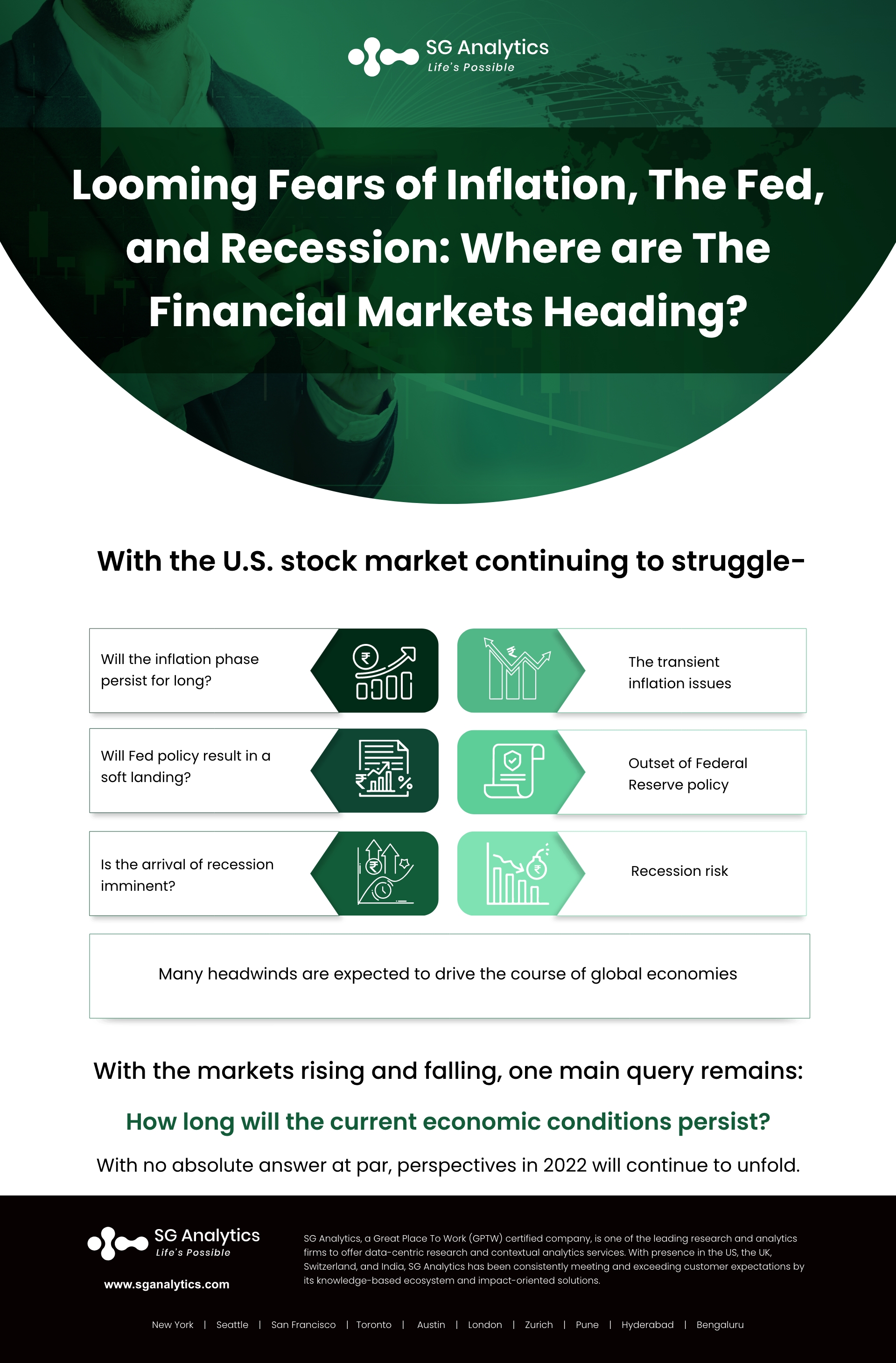The past years have been a year full of worries for investors and economies, from geopolitical friction to inflation to the pandemic. And it does not look like the concerns will ease anytime soon.
Some experts are predicting that the combination of these major macroeconomic and geopolitical issues will make it difficult for stocks to ascend out of their downward spiral and finish 2022 in positive territory.
The U.S. stock market is continuing to struggle amid the Fed policy shift, inflation anxiousness, and recession risk.
Will the inflation phase persist for long?
Will Fed policy result in a soft landing?
Is the arrival of recession imminent?

With many headwinds expected to drive the course of global economies, investors are already fretting about the aftermath of the inflation as well as the likelihood of the rise of Federal Reserve interest rates. Meanwhile, with COVID-19 still looming, the recent spike in cases in China is raising alarm bells.
The Transient Inflation Issue
In mid-2021, the Fed indicated that inflation would be a temporary, transient issue. But the current market situation stated that it would persist for quite some time. Inflation is created when the demand and supply do not match.
The chief reason for today’s inflation is the supply shortage driven by the pandemic. Businesses are unable to find the essential raw materials, and there is also a shortage of workers. Coupled with higher gasoline prices, particularly diesel fuel, profit margins are being compressed.

The higher operating costs have also led to a decline in corporate profits, which has led to layoffs in smaller trucking companies. Moreover, Walmart WMT, Target, and other large retailers have reduced their forward estimates due to inflation and supply chain issues. This supply chain disruption will take some time to regularize.
The other leading cause of inflation is the strong demand for resources. Since the onset of the pandemic, the federal government passed a series of bills that put monetary flow directly into the hands of businesses and consumers. This excess liquidity contributed to a strong rise in demand. After a prolonged period of isolation and less social interaction, people are ready to get back to their normal lives. This is also being perceived as one of the reasons why inflation will persist.
Read more: Top Trends That Will Shape Investment Banking in 2022
The outset of the Federal Reserve Policy
Another element, as critical as inflation, is the Fed policy. After more than 13 years of zero interest rates and unprecedented expansion of the U.S. money supply, the Fed is altering course. It is moving from its easy monetary policy to a tightening policy. This choice will likely lower the demand in hopes of curbing inflation.

The Federal Reserve has raised the interest rates by 0.75% and will reduce its balance sheet/money supply. These tightening measures are being perceived as stiff headwinds for financial markets. With the onset of the pandemic, the central banks reduced their interest rates and raised their money supply. But with the newly imposed measures, the global economy is displaying worrisome signs of weakness, which are being aggravated by the war in Ukraine and covid’s continuing hold on industrial supply chains.
While the Fed is just starting to rebuild the loose monetary stance it adopted during the pandemic; global financial conditions are already tighter than at any time since the 2008 financial crisis. Faced with tighter money, the war in Europe, and fresh supply chain troubles in Asia, global growth may buckle.
The risk is that the Fed and other central banks are enforcing similar anti-inflation policies, which may adjust too slowly to the fast-changing global landscape. But one question still prevails- Will the Fed go this far?

Recession Risk
What is the risk of recession?
A recession is an economic cycle contraction that onsets a decline in economic activities in two calendar quarters with negative GDP. While the first quarter of 2022 saw GDP fall by 1.4%, the second-quarter GDP is expected to experience the same fate.
Is a recession imminent?
Investors are predicting a chance of a recession in the U.S. at greater than 50/50 by the second quarter of 2022 and the onset of 2023. Fed policy will play a key role. If the Fed further tightens its policies, a recession is inevitable. Earlier in 2022, the Fed announced the rise in interest rates.
With the Fed stating its data-dependent terms of future policy decisions, the Fed statement is being perceived as a trial balloon in which the Fed will test how markets and the economy would react. While the Fed is in a tough spot, investors are expecting that it will not raise rates too sharply.

Read more: The Changing Dynamics of International Investment in India
Experts are expressing concerns over the major moves that lie ahead. They believe that while the Fed recognizes there is a risk of going overboard with rate hikes, these small increases may not drastically slow down the economy. While they believe that it is still early to give up on hopes of a market rebound later in 2022, if implemented, the Fed rate hikes would pose a longer-term problem for the economy.
With worries about Ukraine and supply chain issues finally subsiding, the earnings growth is likely to return to more normal levels, thereby boosting stocks.
The recent market volatility and drawdown are directing the economies toward a quick shift in monetary policies. With many investors still wondering whether the US economy is heading into recession, high inflation, rising interest rates, and recent equity market decline are all signaling a downturn. These signals coincide with another major data point exhibiting that US gross domestic product (GDP) has declined in the first quarter of 2022. These trends have increased the likelihood of an economic slowdown leading to recession.

Is this an Onset of a New Global Economic Pandemic?
Now, faced with the highest inflation rates in decades, the Fed is changing course. While the Fed is just forming to overhaul the loose monetary stance it adopted during the pandemic, global financial conditions have been escalating the most since the 2008 financial crisis. This sudden end of the easy-money era has compelled investors to reevaluate the worth of their stocks, bonds, and commodities.
Higher U.S. interest rates are making themselves felt beyond U.S. borders. A more muscular greenback is making U.S. imports less expensive, thus aiding in cooling inflation. But this will make key commodities, including oil and wheat, more expensive for other nations to buy in global markets.

With higher U.S. rates drawing capital from emerging markets, local currencies are depreciating, and government bonds are losing their value. This is forcing local banks to pull back on lending, thereby weakening the economic growth curve.
Policymakers are falling behind the curve and struggling to address inflationary pressures on the supply chain dynamics. While there is no playbook for how economies will transition out of this global pandemic environment, the markets are particularly showing a complicated path ahead.
Read more: Is Silicon Valley Still Dominating Global Innovation?

Looking Forward
Amidst this environment of uncertainty, economic and corporate fundamentals are holding their stable grounds. While economic growth is expected to be moderate, the situation will lead to a better alignment between economic growth and production, thereby easing inflationary pressures.
The US yield curve temporarily inverted in early April, which is indicative of a recession ahead, owing to its notable history of inversion before each recession since 1965. The Federal Reserve’s proposal to calm inflation by increasing interest rates and withdrawing emergency stimulus programs is pointing towards alarming signs of weakness. These data points are sending recessionary signals for the months ahead.
Even with the current market turbulence, the economy is expected to withstand the rising rate environment. With proper portfolio positioning and strategy, the storm on capitalization opportunities is expected to descend over the period ahead.
In 2022, stocks will continue to struggle. With investors being cautious and withdrawing money from their portfolios, the support for distributions is loosening.
Markets fall and markets rise, but the main query remains: how long will the current economic conditions persist?
With no absolute answer at par, predictions state that the plunging financial market situation will pass, and perspectives in 2022 will continue to unfold.
With a presence in New York, San Francisco, Austin, Seattle, Toronto, London, Zurich, Pune, Bengaluru, and Hyderabad, SG Analytics, a pioneer in Research and Analytics, offers tailor-made services to enterprises worldwide.
A leader in the BFSI space, SG Analytics assists businesses with insightful relevant research along with sophisticated technology solutions. Contact us today if you are in search of an efficient market research service provider to make critical data-driven decisions.









